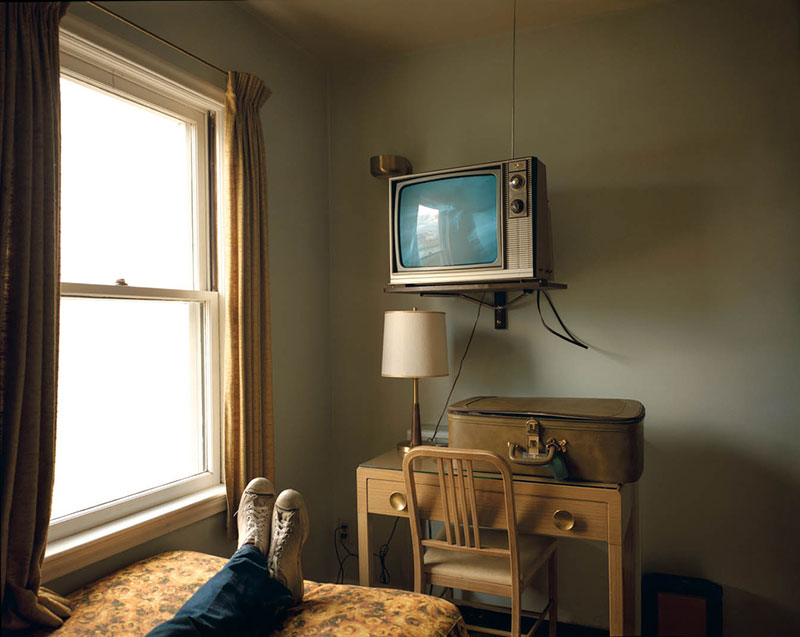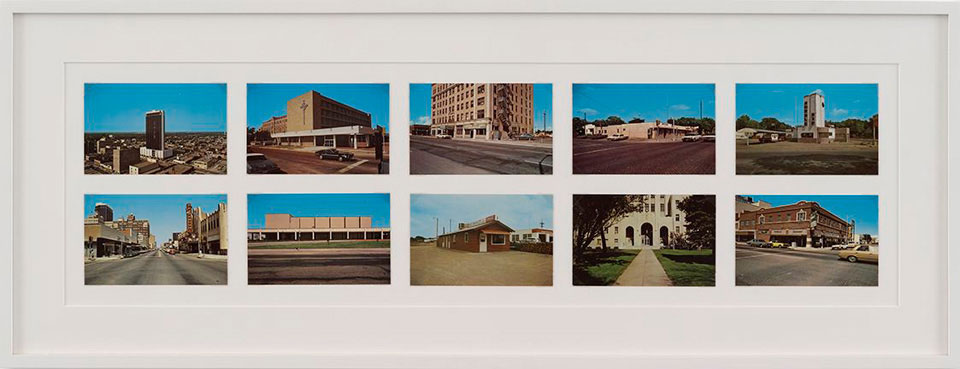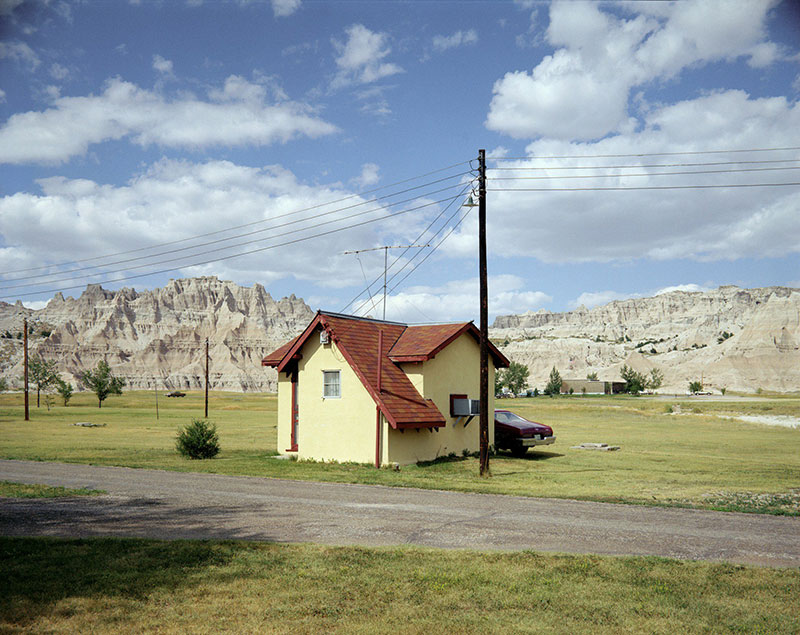A great pioneer in his field, Stephen Shore (b. 1947) is a contemporary artist that has influenced a whole generation. Known for his objective and “banal” images, he has travelled across the world capturing everyday moments, with more than 50 solo exhibitions, and several monographs including the two famous American Surface & Uncommon Places. His deep desire of exploring the medium by recreating the conventions has made him a legendary photographer. Last year, Les Rencontres d’Arles devoted a retrospective to his career.
A very young career
He was only 11 years old when he received a copy of Walker Evans’ American Photographs. At age 14, he obtained an appointment with the director of the photography department at the MoMA (Edward Steichen) to show him his photographs (for the story, he bought him three). Later on, and with an already mature approach, his encounter with Andy Warhol and his experience in the Factory between 1965 and 1967 will forge even more his vision. Self-taught, he will say later that he learned photography at the Factory not at the University. So at the age of 23, Stephen Shore became the second artist to have his solo exhibition at the Metropolitan Museum of Art. He defended his vision with gusto, and the strength of his opinions weighed in his favor.
Greetings from Amarillo to American Surfaces (1972)
“To see something spectacular and recognize it as a photographic possibility is not making a very big leap,” Stephen Shore once said. “But to see something ordinary, something you’d see every day, and recognize it as a photographic possibility – that’s what I’m interested in.”
In 1972, he began his photographic journey starting by Texas. With the Greetings from Amarillo project, he published a set of postcards featuring the city of Amarillo that he would distribute in tourist shops. “Until I was twenty-three, I lived mostly in a few square miles in Manhattan. In 1972, I set out with a friend for Amarillo, Texas. I didn’t drive, so my first view of America was framed by the passenger’s window. It was a shock.” This first exploration will set up the beginning of his research for a deliberately amateur aesthetic, which will lead him to North American roads in 1972, with the series American Surfaces.
With his point-and-shoot camera, a Rollei 35, he started exploring the country with the eyes of an everyday tourist. In his roadtrip diary he captured ordinary shots of daily meals, hotel rooms and checks. These banal images of everyday life, all but spectacular, showed his intention of creating the snapshot aesthetic, a true hijacked tourist act. “In American Surfaces, I was photographing almost every meal I ate, every person I met, every waiter or waitress who served me, every bed I slept in, every toilet I used. But also, I was photographing streets I was driving through, buildings I would see. I would just pull over and say, ‘Okay, this is a picture I want.”
Back in New York, Shore returned with hundreds of rolls and had an exhibition at the Light Gallery. But despite his insistence that the work’s conventional aesthetic was entirely intentional, the exhibition received poor reviews. Also, he soon realized that his negatives were too small: “I found that the film just wasn’t good enough to support an 8”x10” [print] even. It was just ridiculously grainy.” At that time, he knew he needed larger negatives and this lead him to work on his next masterpiece.
Uncommon Places (1973-1981)
Shore’s most famous success is Uncommon Places. This work followed American Surface with the technical difference that he used a 8×10 large format camera. He continued to travel the USA at great length. Contrary to his 35mm snapshots for American Surface, this new bulky gear, which required a tripod, will gradually change his approach. His photographs will become more complex and sophisticated, revealing all his virtuosity. “The view camera forces conscious decision making. You can’t sort of stand somewhere; it is exactly where you want to be… So what happens is that you develop a kind of taste for certainty.”
Topics would start to be chosen with greater attention, and portraits started to be posed. That also gave his images a razor sharpness for that period, with subtle brightness. He used the urban space (street lights, poles, cars, commercials, signs) and architecture to build his contemplative images. Due to the considerable amount of visual information, these multiple levels of interpretation required the viewer’s attention.
“To see something ordinary and recognize it as a photographic possibility, that’s what I’m interested in.”
“Especially if I’m photographing an intersection, I don’t have to have a single point of emphasis in the picture. It can be complex, because it’s so detailed that the viewer can take time and read it; they can pay attention to a lot more.” The background and foreground melted creating codified photographs with very dense details that can be extensively observed. As Walker Evans thought before him, he considers the medium as a time capsule, therefore cars in his imagery are true markers of time, because this object is constantly changing through time.
In 1982, a slender version of Uncommon Places was released, but it was very limited taking in account Shore’s overall prolific nine-year work. In recent years, there has been a massive resurgence of the interest for color photography pioneers, and the reissuing of books that have long been out of print, such as William Eggleston’s Guide. More than thirty years after the project was first embarked upon, Uncommon Places: The Complete Works was released in May 2004.
Breaking the rules
Shore is driven by a deep desire to explore the medium itself, its history and its terms, and to deconstruct the dominant conventions, to renew the established rules of the photographic language and more generally our visual perception. In the 60s when photography made its entry in the world of art, the work of Stephen Shore played a major role. Shunned at first by critics because his everyday life images weren’t in black & white, he marked the history of contemporary photography, and broke the conventions of that time.
Alongside William Eggleston, his work proved that color photography -associated to the world of advertising in that moment- could be considered a work of art. Many artists, including Nan Goldin, Andreas Gursky, Martin Parr, Joel Sternfeld, and Thomas Struth, have acknowledged his influence on their work. His work has immensely influenced new generations of photographers, to the point that it has created a new form of conventionalism nowadays.
Links
stephenshore.net
Stephen Shore — 303gallery
Stephen Shore — San Francisco Museum of Modern Art
An Autobiography of seeing: Stephen Shore’s Ucommon Places — Aaron Schuman
Interview with Stephen Shore — Issue Magazine






























